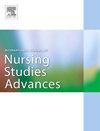解决2型糖尿病患者的暴饮暴食:基于设计思维方法的对话工具的共同创建和可行性测试
IF 3.1
Q1 NURSING
International Journal of Nursing Studies Advances
Pub Date : 2025-09-25
DOI:10.1016/j.ijnsa.2025.100430
引用次数: 0
摘要
暴饮暴食可能影响四分之一的2型糖尿病患者,可能导致负面的健康结果。然而,由于缺乏筛查工具和患者由于羞耻和内疚而不愿寻求帮助,暴饮暴食在糖尿病护理中往往得不到解决。研究的目的是开发可接受和可行的糖尿病特异性对话工具,促进2型糖尿病患者和临床医生之间关于暴饮暴食的讨论,作为检测和管理该人群潜在暴饮暴食的第一步。设计对话工具的开发和评估是根据医学研究理事会的复杂干预框架进行的。研究人员于2023年3月至9月从一家专门的地区糖尿病医院招募了2型糖尿病患者和临床医生。研究人员是从同一家医院和相关研究网络中招募的。参与者共同创造的过程包括11个研讨会和16个与2型糖尿病患者(n = 21)、临床医生(n = 16)和研究人员(n = 8)的个人反馈会议。三位临床医生对对话工具进行了可行性测试(n = 24)。方法采用设计思维方法,与2型糖尿病患者、糖尿病临床医生和具有糖尿病和/或饮食失调专业知识的研究人员共同创建对话工具。对话工具在糖尿病常规会诊中连续进行可行性测试。该研究产生了三种对话工具,旨在促进临床医生和2型糖尿病患者之间的讨论:1)对饮食的日常想法,以及他们是否觉得这些负担,2)饮食模式,3)总体饮食习惯。每个对话工具包括三个部分;在第一部分中,描述了糖尿病患者日常生活中潜在的饮食挑战,并描述了该工具中嵌入的锻炼目的。在第二部分中,患者积极进行所描述的运动,在第三部分中,患者与临床医生讨论随访问题。第二部分和第三部分旨在帮助患者认识和反思他们的饮食行为。25%的咨询确定了潜在的暴饮暴食行为,而其他可能影响糖尿病管理的饮食挑战通常在其余咨询中讨论。结论:在常规糖尿病咨询中,对话工具不仅可以有效地解决暴饮暴食问题,还可以有效地解决2型糖尿病患者的其他重大饮食挑战。鼓励进一步研究以评估不同环境下的工具。本文章由计算机程序翻译,如有差异,请以英文原文为准。
Addressing binge eating in people with type 2 diabetes: Co-creating and feasibility testing dialogue tools based on a design thinking approach
Background
Binge eating disorder may affect one in four individuals with type 2 diabetes, potentially leading to negative health outcomes. However, binge eating often goes unaddressed in diabetes care due to the absence of screening tools and the reluctance of patients to seek help due to shame and guilt.
Objective
The study aim was to develop acceptable and feasible diabetes-specific dialogue tools to facilitate discussions about binge eating between patients with type 2 diabetes and clinicians, serving as a first step toward the detection and management of potential binge eating in this population.
Design
The development and evaluation of the dialogue tools were conducted according to the Medical Research Council’s complex interventions framework.
Setting
Individuals with type 2 diabetes and clinicians were recruited from a specialized regional diabetes hospital during March to September 2023. Researchers were recruited from the same hospital and relevant research networks.
Participants
The co-creation process consisted of 11 workshops and 16 individual feedback meetings with people with type 2 diabetes (n = 21), clinicians (n = 16), and researchers (n = 8). Three clinicians feasibility-tested the dialogue tools (n = 24).
Methods
Applying a design thinking approach, the dialogue tools were co-created with individuals with type 2 diabetes, diabetes clinicians, and researchers with diabetes and/or eating disorder expertise. The dialogue tools were feasibility tested consecutively in routine diabetes consultations.
Results
The study generated three dialogue tools aiming to facilitate discussions among clinicians and patients with type 2 diabetes about the patients’ i) daily thoughts about food and drink, and whether they find these burdensome, ii) eating and drinking patterns, and iii) overall eating habits. Each dialogue tool included three parts; in part one, potential eating challenges in everyday life with diabetes are described, and the purpose of the exercise embedded in the tool is described. In part two, the patient actively carries out the described exercise, and in part three, the patient and clinician discuss follow-up questions. Parts two and three were designed to help patients recognize and reflect on their eating behaviors. Potential binge eating behaviors were identified in 25 % of the consultations, while other eating challenges that could impact diabetes management were commonly discussed in the remaining consultations.
Conclusions
The dialogue tools may be effective in addressing not only binge eating but also other significant eating challenges in individuals with type 2 diabetes during routine diabetes consultations. Further research is encouraged to evaluate the tools in different settings.
求助全文
通过发布文献求助,成功后即可免费获取论文全文。
去求助
来源期刊

International Journal of Nursing Studies Advances
Nursing-General Nursing
CiteScore
5.80
自引率
0.00%
发文量
45
审稿时长
81 days
 求助内容:
求助内容: 应助结果提醒方式:
应助结果提醒方式:


